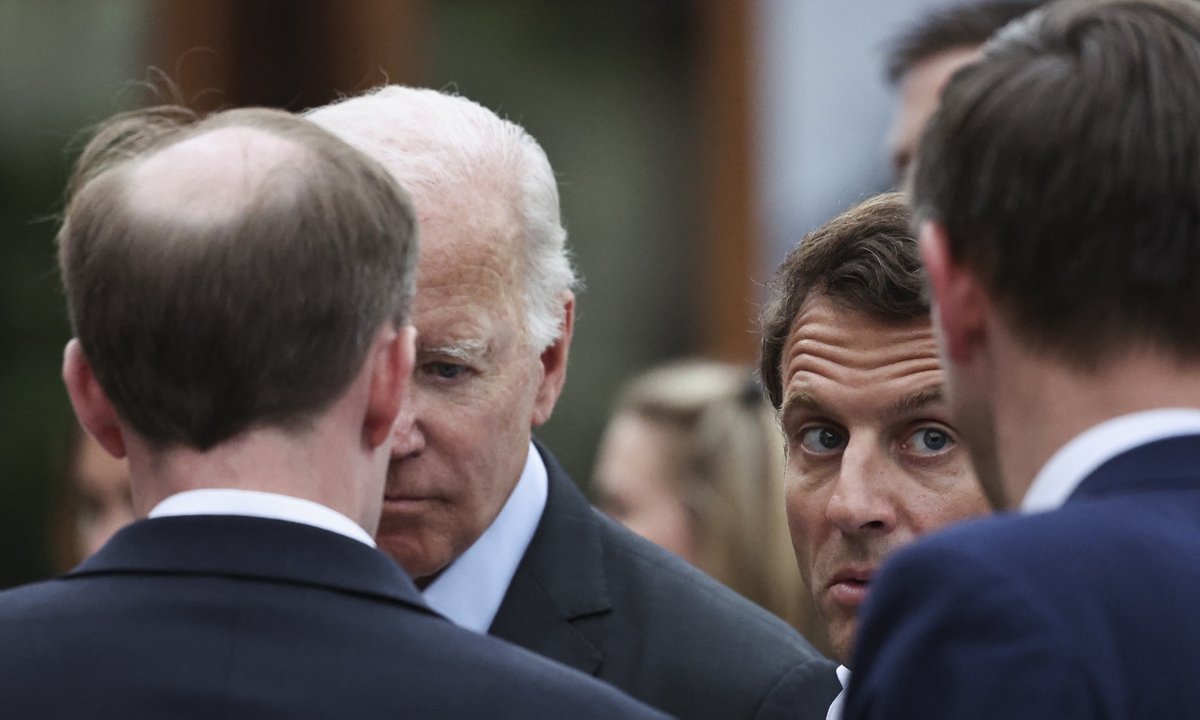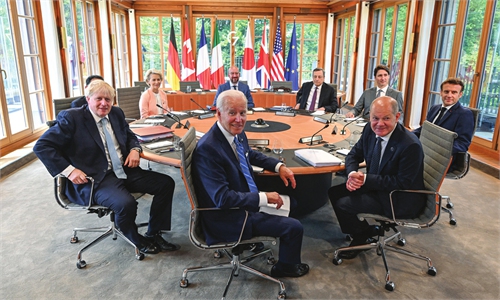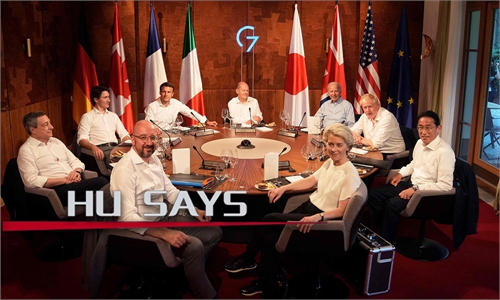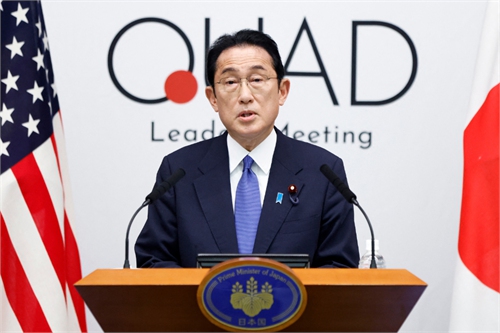Herding all developing nations into US-led global economic order is a weird illusion

US President Joe Biden (left) and French President Emmanuel Macron attend the G7 Summit on June 27, 2022 at Elmau Castle, southern Germany.Photo: AFP
The G7 Summit was concluded last week. It didn't reach a consensus because of the autocratic stance of the US on various policies. The outcome was not very positive, as it is challenged by internal disagreements over trade and climate policies. The G7 discussions focused on reducing Europe's dependence on Russian energy and finding other ways to increase the economic pain for Moscow; the group is considering imposing a price cap on Russian oil. Additionally, the bloc faces a looming global food crisis springing from the Russia-Ukraine tensions, which have resulted in shortages of wheat and other crops. The G7 countries failed to reach a consensus on these issues. External dynamics have also chipped away at the G7's global influence.India was also invited to participate at the G7 Summit. At the summit, referring to the Ukraine crisis, which has pushed up energy prices across the globe, Indian Prime Minister Narendra Modi said that "energy access should not be the privilege of the rich only - a poor family also has the same rights on energy. And today when energy costs are sky-high due to geopolitical tensions, it is more important to remember this thing."
Obviously, it was a dig at the West, and he was justifying India's decision to buy discounted oil from Russia. India will continue to buy oil. India may buy Russian oil in future with the Chinese yuan as the reference currency, strengthening the BRICS cooperation once again. The G7 countries fear the BRICS' willingness to expand.
Those who attended the G7 summit and the subsequent 2022 NATO summit in Spain tried to present a gait of bonhomie, but they are facing internal squabbles.
China was targeted both by the G7 and NATO summits as a systemic rival. The powers behind both the summits are wary of China's ascendance as a global economic power. They are also worried about China's clout with developing countries. The reason why the G7 Summit has targeted so much at China is regarded as an effort to wean away the developing world from China. There is a US lobby that wants India to be a partner of NATO, the so-called Asia-Pacific NATO.
The G7 Summit also devised a $600 billion infrastructure plan as a counter to the China-proposed Belt and Road Initiative (BRI). It is called the Partnership for Global Infrastructure and Investment (PGII) and is a re-launch of an unclear B3W scheme unveiled at last year's G7 meeting. The background of PGII is suspicious. It was mooted in 2021 in uncertain terms, without clarity on funds. Now it has been re-launched saying there will be private participation. But again, the summit has not been transparent on who are the private investors, raising suspicion about the US corporate intervention. In contrast, the BRI emphasizes transparency.
The G7 fund will focus on climate initiatives, among other projects, including a $2 billion solar farm investment in Angola, $320 million for hospital construction in the Cote d'Ivoire, a vaccine manufacturing facility in Senegal, a 1,690 kilometers submarine telecommunications cable connecting Singapore to France via Egypt and the Horn of Africa, and $40 million to promote regional energy trade in Southeast Asia.
If the crude US political agenda forces these developing countries to take sides, they will be in a quandary. Herding all developing countries into a US-led global economic order is a weird illusion.
(The opinions expressed are those of the writer(s) alone and do not necessarily reflect the position of the Global Times.)
The author is a reputed Indian writer, editor, columnist and scholar. He is currently a writer at Singapore-based KrASIA.



